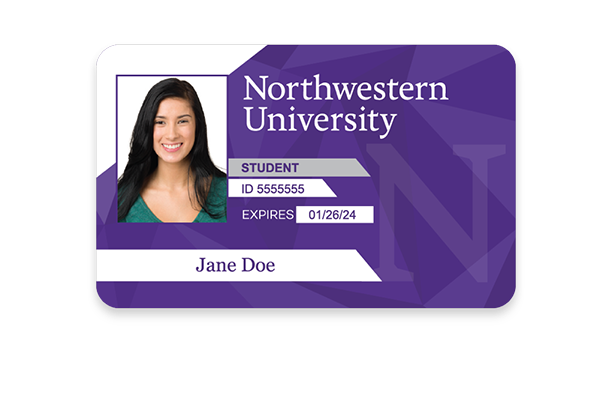
There are several types of grants for college students. These include the Pell Grant, and the Aid for Part-Time Study(APTS) program. A student may also qualify to receive a grant if he or she is a member of a particular religion or wishes to pursue a religious career. Other types of college grants include scholarships and career development grants. For students to apply for grants, they must first check the eligibility requirements.
Pell Grant
How do you apply for a Pell Grant? There are many factors involved in applying for a Pell Grant, but the first one is the expected family contribution (EFC). To calculate your EFC, you will need to use your family income as well as your expenses. Your expected contribution and the college you attend will determine how much you can get. FAFSA allows you to calculate your EFC among other factors.
Pell Grant is an award that grants money to low-income students to help them pay for college. It is available to anyone who meets certain criteria. An undergraduate student is required, not a graduate or professional student. The student's eligibility ends after they have earned a baccalaureate (or their first professional degree). After six years, a student cannot receive a Pell Grant again. Additionally, the grant is only available for twelve terms (equivalently six years) per academic year.

Career development grants
Many opportunities exist for college students to be eligible for funding for career development. AAUW Career Development Grants are one of these options. These grants are available for women who have completed a bachelor’s degree but lack the professional or graduate level they need to pursue their chosen career. You can apply even if you're not a U.S. citizen. These grants are available to assist with tuition, local transport, or childcare.
AAUW Career Development Grants for Women have helped many women achieve degrees and professional success. Dana Kaplan was granted a grant in 2011-12 and became a master technician. Esy Casey, who received a Career Development Grant in 2012, is a filmmaker who recently completed a documentary on Jeepneys in the Philippines. In 1998, she was awarded an AAUW Career Development Grant. This grant has supported many women in pursuing their academic goals. As well as pursuing a degree in graduate studies, she also serves as the executive assistant to Erie's mayor. She is also a liaison to refugee young people.
Assistance for part-time education (APTS).
The Aid for Part-Time Study (APTS) program provides grant money to eligible part-time undergraduate students. APTS grants can be awarded to students taking between three and eleven semester credits. Eligibility criteria are based on New York State net taxable income. To be considered to receive an APTS award you must complete both the FAFSA application and TAP. You must also be matriculated in the program.
To be eligible for APTS you must have received a C-grade in your two previous years of state-sponsored help. You must also be a US citizen, permanent resident alien, refugee, or meet income requirements. You can still apply for federal grants if you don't meet these requirements. To apply for federal grant money, you must have a GED or final high school transcript on file.

Scholarships
There are many types of college scholarships. Some scholarships provide financial aid, while others offer in-kind grants which waive tuition and other costs. Some scholarships pay tuition plus room and board. The criteria for receiving and applying for these awards vary depending on whether you are applying for scholarship or scholarship. These are examples of types of scholarships you might be eligible for. Don't forget about the eligibility requirements before you apply. There are more scholarship and grant opportunities than you might think.
Corporate sponsorships may sponsor some scholarships. These scholarships are also known as branded scholarships. A famous example of a brand-sponsored scholarship is the Miss America pageant. These scholarships are not the only types of financial aid available. Federal loans and state grants are also options. But if you're still not sure which type of college scholarship to apply for, here are a few tips to get started:
FAQ
How long does a teacher of early childhood take?
It takes four years to complete a bachelor's degree in early childhood education. Two years will be spent taking the general education courses required of most universities.
After your undergraduate studies, most people enroll in graduate school. This step allows one to specialize in a certain area of study.
You could, for example, choose to study learning disabilities or child psychology. After you complete your master's, it is time to apply to a teacher-preparation program.
This process can take many years. During this period, you will work with experienced educators to gain real-world knowledge.
You will also need to pass state exams in order to become a teacher.
This process is lengthy and you will not be able instantly to enter the workforce.
Do you have to go to college in order become an early education teacher?
No, but you might want to consider going to college to prepare yourself for a future career in the field.
It is important that you realize that being a teacher can be difficult. Every year, many people are rejected. In addition, many people quit after just one semester of college.
To become a teacher, you must also meet certain qualifications.
What is the distinction between public and private schools, you ask?
All students are eligible to attend public schools for free. They offer education from kindergarten to high school. Tuition fees are charged by private schools for each student. They offer education from preschool to college.
Charter schools can also be found, which are privately owned but are not publicly funded. Charter schools don't follow traditional curricula. Charter schools allow their students to explore what interests them.
Charter schools are popular among parents who believe their children should have access to quality education regardless of financial status.
What is homeschooling and how does it work?
The homeschooling method is where the parents educate their children at home. It's also known as home education, self-education, and home educating.
Families who wish to homeschool their children are well served by this option. This allows them access to a quality education while staying at home.
The parents educate their children from birth to high school. They decide what subjects and how long they should study. The student learns everything on his/her own time.
Parents choose when to start teaching their children. Many schools recommend that children enroll in classes between the ages four and twelve. However, some families prefer to wait until their children are in kindergarten before they start teaching.
Any number of resources can be used by parents to guide them through the curriculum. Books, videos, websites, and even magazines provide valuable lessons.
Many families find homeschooling a great fit for their busy schedules. Children can be spent more time at home than in traditional public schools.
What are the main types of early education?
There are many ways you can describe early childhood education. Some of the most popular ones are:
-
Preschool - Children ages 2 to 5
-
PreKindergarten: Children 4-6 years old
-
Head Start/ Headstart for children ages 0-3
-
Day Care/ Daycares- Children aged 0-5
-
Child Care Centres - Children from 0-18 Years
-
Family Child Care - Children ages 0 to 12
-
Home Schooling - Children ages KG to 16
Statistics
- Globally, in 2008, around 89% of children aged six to twelve were enrolled in primary education, and this proportion was rising. (en.wikipedia.org)
- Data from the Department of Education reveal that, among 2008 college graduates, 92.8 percent of humanities majors have voted at least once since finishing school. (bostonreview.net)
- They are also 25% more likely to graduate from high school and have higher math and reading scores, with fewer behavioral problems,” according to research at the University of Tennessee. (habitatbroward.org)
- Think of the rhetorical power of nineteenth-century abolitionist Harriet Beecher Stowe, Martin Luther King, Jr., or Occupy Wall Street activists with their rallying cry of “we are the 99 percent.” (bostonreview.net)
- These institutions can vary according to different contexts.[83] (en.wikipedia.org)
External Links
How To
Where can I go to be a teacher?
Teacher jobs are available at public elementary schools, private elementary school, private middle schools. Public secondary schools, public secondary secondary schools. Private secondary schools. Charter schools. Public and private Catholic schools. Public and private daycare centers.
You must complete a bachelor's program at one of these institutions before you can become a teacher:
-
A four-year university or college
-
An associate degree program
-
Two-year programs at community colleges
-
These programs may be combined
Candidates must fulfill state requirements to be eligible for teaching certification. These requirements include passing standardized tests, and completing a probationary phase of work experience.
Most states require that candidates pass the Praxis II exam. This test measures knowledge in reading and writing as well math skills.
Many states require that candidates obtain a specialized license in order to be certified to teach.
These licenses may be obtained by the boards for education of the states.
Some states grant licenses automatically without additional testing. These cases require that the applicant contact the state board of education to confirm if the license is granted.
Some states won't issue licenses to applicants without a masters degree.
Individuals in other states can apply for licensure directly to their state boards of education.
Licenses come in a variety of prices, lengths, and required coursework.
One example is that some states only require high school diplomas, while others require bachelor's degrees.
Some states may require training in particular areas such as literacy or child developmental.
Some states require candidates have a master's before they can become licensed.
When applying for certification, many states ask prospective teachers about previous employment.
You may want to mention that you have been employed in another occupation on your application.
However, almost all states will accept work experience from any type of previous job.
You might want to list your job title, previous position, and years of experience.
These information are often useful to potential employers.
It shows them that your skills and experiences are relevant.
You might have acquired valuable work experience or learned new skills while working.
This can be displayed on your resume to future employers.